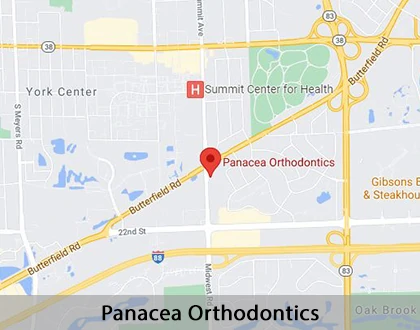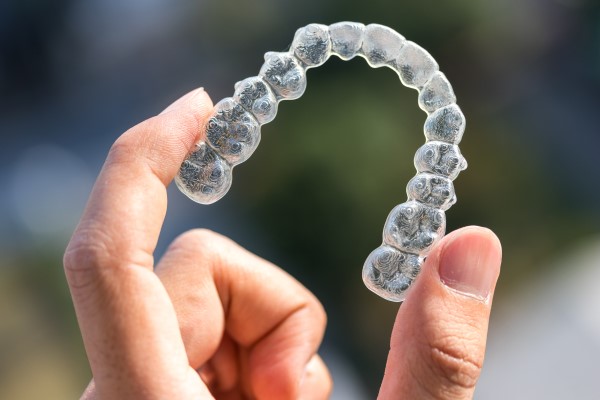Growth AppliancesOak Brook, IL
Orthodontists use growth appliances to correct many issues, including encouraging your jaw and teeth to move into the correct position. Orthodontists often recommend growth appliances to correct improper jaw development and other issues, including crowded teeth, overbites, sleep apnea, and more.
Growth appliances are available at Panacea Orthodontics in Oak Brook and the surrounding area. Our team provides recommendations to correct issues occurring in your mouth. We help you understand what causes these problems and how to fix them. Call us at (630) 828-5080 to learn more about our services.
Growth Appliances to Consider
Orthodontic treatments require several different metal tools and appliances, sometimes including growth appliances. The American Association of Orthodontics states that, even though treatments typically range between ages nine and 14, younger children could also benefit from earlier treatment. Orthodontists will recommend a different type of growth appliance depending on the issue. These may include:
- Palate Expanders: Palate expanders may be beneficial when there is not enough room in the mouth for teeth to fit correctly.
- Orthodontic Growth Appliances: These appliances address issues for patients who breathe through their mouth, have improper lip seals, or improper tongue position.
- Thumb Sucking Growth Appliances: Children may have significant dental issues if they suck their thumb beyond the age of three. Thumb sucking growth plates may help a child stop sucking their thumb.
- Tongue Habit Growth Appliances: One’s tongue should rest at the roof of the mouth. Abnormalities can develop in the mouth if the tongue position is incorrect when eating, swallowing, or talking.
“Orthodontists will recommend a different type of growth appliance depending on the issue.”
Appliances for Facial Development
Three factors influence facial development: lip seal, nasal breathing, and proper tongue position. If these factors are not present during development and growth, they can cause imbalances in the craniofacial structure. The result is a long-face syndrome or midface deficiencies because the jaws are not developing to their true genetic potential.
The causes for these physical defects include:
- Adverse swallowing patterns
- Finger and thumb sucking
- Genetics (approximately 10% of patients)
- Improper tongue position
- Lips apart, tongue not resting on the palate, and other improper oral positions
- Soft tissue dysfunction causing mouth breathing (adenoids, allergies, enlarged tonsils)
“Three factors influence the facial development: lip seal, nasal breathing, and proper tongue position.”
Appliances for Tongue Habits
Orthodontists commonly use tongue habit appliances to help address oral habit patterns. Examples of these appliances include cribs, prongs, rakes, spikes, and other tongue habit reminders. Most appliances for tongue habits feature designs that block your tongue thrust.
Instead of dealing with the development of jaw problems, including a crossbite or misaligned teeth, one can use appliances for tongue habits. These appliances look similar to retainers used after their braces. A common tongue habit is thrusting, which typically resolves itself by age six. Similar to the palatal crib, tongue thrust appliances block the tongue from thrusting.
“Examples of these appliances include cribs, prongs, rakes, spikes, and other tongue habit reminders.”
Check out what others are saying about our dental services on Yelp: Growth Appliances in Oak Brook, IL
Appliances for Breaking Bad Personal Habits
Most children stop sucking their thumbs between ages two and four. Habit appliances, or habit-breaking appliances, are dental appliances that help break bad personal habits. Habit appliances allow children to put their finger or thumb into their mouth, but it is not as comfortable. Eventually, the appliance discourages the child from continuing this habit.
Other habits that may need appliances include:
- Biting or sucking on their lower lip
- Excessive pacifier use
- Teeth grinding
- Tongue thrusting
“Habit appliances allow children to put their finger or thumb into their mouth, but it’s not as comfortable.”
Questions Answered on This Page
Q. How do I know which growth appliances I should use?
Q. What are appliances for facial development?
Q. What are appliances for tongue habits?
Q. What are appliances for breaking personal habits?
Q. When should I use upper, lower, or full mouth appliances?
People Also Ask
Q. What is early orthodontic treatment?
Q. How does orthodontic care improve my oral health?
Q. What are the causes of bite issues and why is it important to fix them?
Comparing Upper, Lower, and Full Mouth Appliances
Orthodontists use many useful techniques to break oral habits, including appliances that correct upper, lower, and full mouth issues. An orthodontist will assess the patient's mouth to determine which appliance is appropriate.
- Upper Mouth Growth Appliances: These appliances work by gently creating additional space in your child’s mouth by expanding their upper jaw.
- Lower Mouth Growth Appliances: Bionators are removable appliances that promote lower jaw growth.
- Whole Mouth Growth Appliances: Anterior appliances work by gradually restructuring the jaw and surrounding areas to correct jaw structure issues, including overbites, TMJ disorder, underbites, and more.
“An orthodontist assesses the patient’s mouth and determines which appliance is appropriate.”
Frequently Asked Questions
Q. How can I know if my child needs growth or habit appliances?
A. If your child still sucks their thumb beyond age four, then they might need a habit appliance. If your child's orthodontist states that there's too much crowding in their mouth, they may need a growth appliance.
Q. Are there specific benefits for habit appliances?
A. Habit appliances are useful and minimally invasive. These appliances help your child stop detrimental oral habits. They continue working even when your child is distracted or sleeping.
Q. What should my child expect during treatment?
A. Treatments start with the placement of the appliance. Anchor bands affix the appliance to your child's back teeth. You can expect the design of the appliance to vary depending on your child's oral issues. During the first few days of use, your child may have a difficult time speaking clearly.
Q. Are appliances painful?
A. During the first few days after placing the appliance, your child may experience some soreness or discomfort as they adjust. The recommendation is to feed them soft food during this timeframe. Over-the-counter pain medications are also useful for managing pain. Once your child adjusts, they should not experience any pain. However, if they have a palate expander, they can expect pressure and pain during each adjustment.
Start Feeling Better – Visit Us Today
By visiting us as soon as possible, our team can help get you the professional treatment you need. Instead of waiting around and allowing the symptoms to get worse, we can provide you with treatment options.
Definition of Dental Terminology
Call Us Today
Growth issues and dental habits can be frustrating. Our team helps parents navigate these issues to identify problems and solutions. We also provide follow-up care that ensures your child's growth is correct or identifies when they are breaking habits.
Do not put off helping your child break oral habits. Let Panacea Orthodontics in Oak Brook help. Contact us at 630-828-5080 to learn more about our growth habit appliances and services.
Helpful Related Links
- American Dental Association (ADA). Glossary of Dental Terms. 2021
About our business, license, and website security
- Panacea Orthodontics was established in 2019.
- We accept the following payment methods: American Express, Cash, Check, Discover, MasterCard, and Visa
- We serve patients from the following counties: DuPage County and Cook County
- We serve patients from the following cities: Oak Brook, Wheaton, Lombard, Elmhurst, Downers Grove, Berwyn, West Chester, Villa Park, Clarendon Hills, Hinsdale and Oak Brook Terrace
- National Provider Identifier Database (1316375926). View NPI Registry Information
- Norton Safe Web. View Details
- Trend Micro Site Safety Center. View Details
Back to top of Growth Appliances







